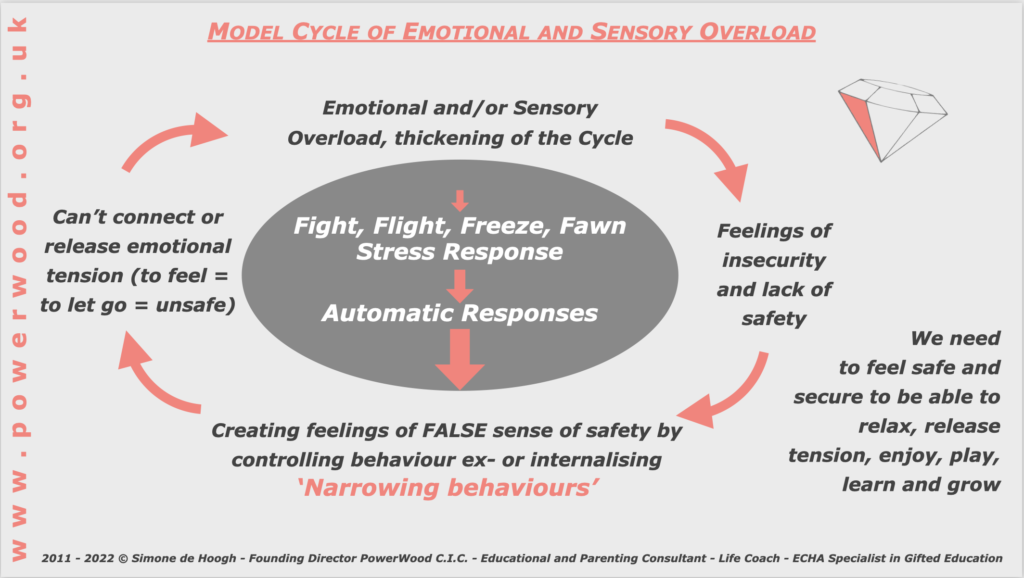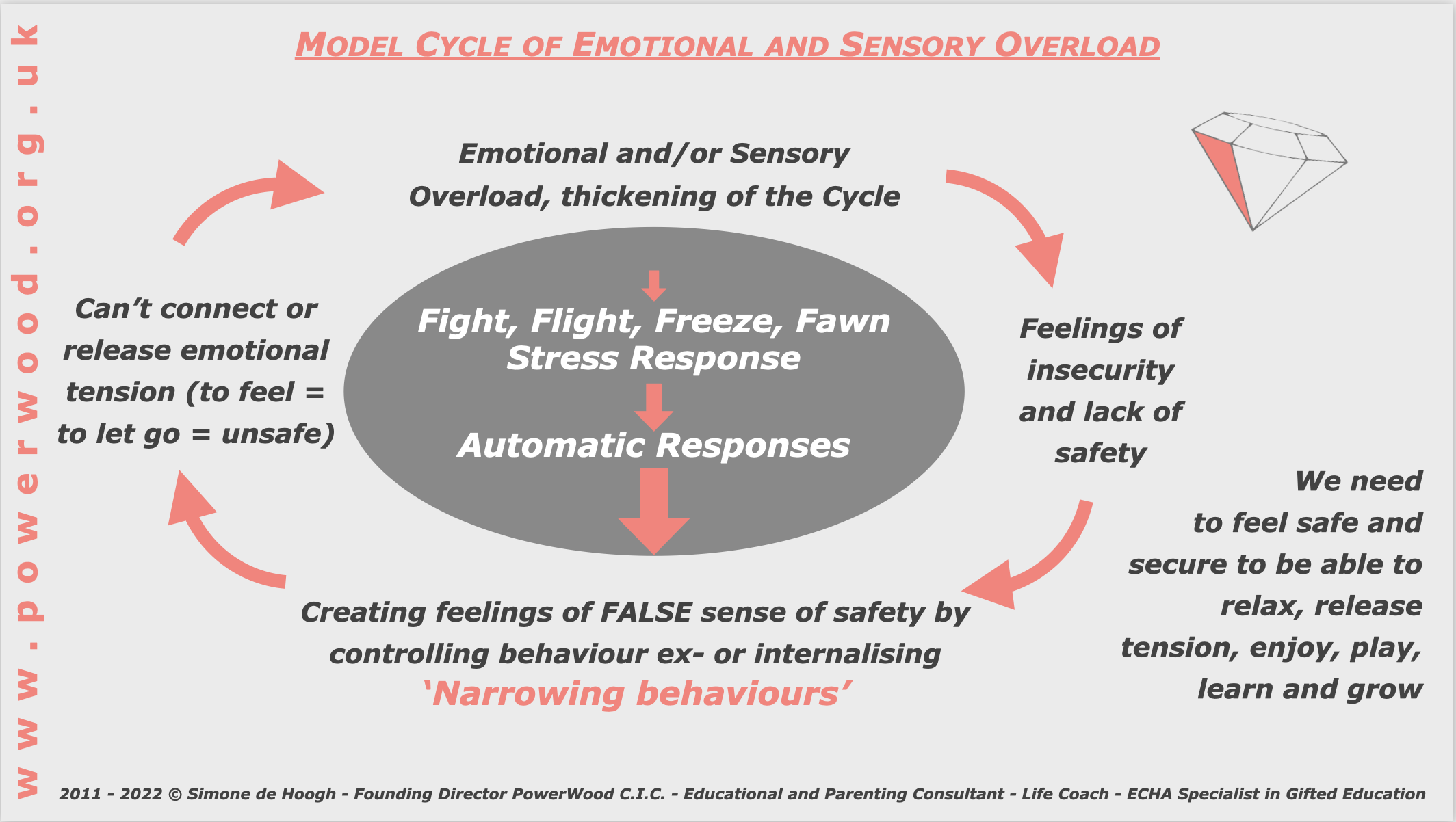The Cycle of Emotional and Sensory Overload gives you a compassionate perspective on ‘naughty’ behaviour in our children and out of character behaviour of our loved ones.
The Cycle of Emotional and Sensory Overload is one of the main concepts in the Multifaceted Emotion Regulation Theory developed by Simone de Hoogh.

The cycle of how emotional and sensory overload may lead to controlling behaviour and even to more emotional overload is illustrated in the above picture.
All children (and adults) who are emotionally overloaded will go off track. This can be by having a tummy ache, or a headache, being grumpy, lashing out, sleep or anxiety issues, or overly trying to control their inner or outer world.
Children displaying this type of behaviour are signalling that they are stressed, emotionally overloaded or that something, someone or a situation is draining their baseline. They are trying to recreate a false sense of safety to at least have some sense of control at some level.
This cycle is often set in motion by an event that triggers our stress response system, fight, flight, freeze or fawn. Our aim is to up our Baseline so we have enough energy and resilience to help them open up the cycle.
Common flag-ups
Everyone has an unconscious physical or psychological alarm system telling them there is something not right that we might be overwhelmed and in the Cycle of Emotional and/or Sensory Overload. The flag up, if we are aware, can make clear when we need to take some time out, take it easy and give ourselves some attention and focus on restoring our Baseline.
For the children, it works the same. Some children have headaches, some children get a tummy ache and some have obsessive or compulsive behaviours, general irritability, anxiety, not sleeping well. They all are just a flag up that the child is not feeling good and needs his or her Baseline strengthened. Our task is to help ourselves and our children to grow non-judgemental awareness about our flag up system. As no change is possible without awareness.
Damage Limitation
When children (or we) are in the Cycle, we focus on staying calm and damage limitation: preventing any further escalation and upset. When our children or we are in the Cycle effective communication is mostly not possible. When in the Cycle and the stress response is triggered our children (and we) are generally not very open to any suggestions because they/we are in defensive mode. Postpone any constructive action until everyone is calm, rested, well fed and in a better mood again. Its never needed to act now, when we feel we have to act now, very often we are experiencing our fight stress response. Doing the 4-7-8 is a helpful tool to stay calm in such a challenging situation.
PowerWood’s Community
Find understanding, tools and strategies that work in an understanding, respectful and compassionate Community.
PowerWood can be your and your families advocate and your second family.
Explore how joining our PowerWood community by becoming a member will benefit you and your family and what types of memberships are available.
Join our Community
Available to Members*
*Booking a one-off Free Introductory Talk of 45-60 minutes by Skype or FaceTime with Senior Consultant Simone de Hoogh is one of the benefits of being either a FreeBee PowerWood Community Member or a Friend PowerWood Community Member.
Book a FREE Introductory Talk with a Professional*
You can read more about PowerWood’s Consultancy Sessions, the Benefits of a Free Introductory Talk and PowerWood’s Consultancy Services Tiered Fee Structure.
*Overexcitability Test
OE (Overexcitability) is an element of a Developmental Theory –Theory of Positive Disintegration by Dabrowski- that is one of the underpinning theories of MERT (Multi-level Emotion Regulation Theory) developed by Simone de Hoogh. Overexcitability explains and allows us to look at ‘extreme’ behaviour as a valuable asset in our or our children’s life.
Find out if you or your child has OE (OverExcitability) as well
*Boundary Test
A HUGE thank YOU to the son and daughter of Ernest Hartmann’s who gave PowerWood permission to use and put the full academically approved questionnaire about the Boundary in the Mind on PowerWood’s website.
Find out how the Boundary in the Mind affects you or your child

